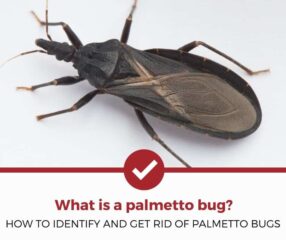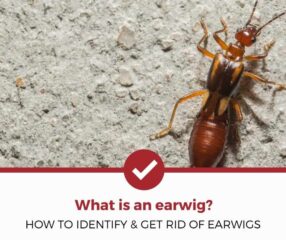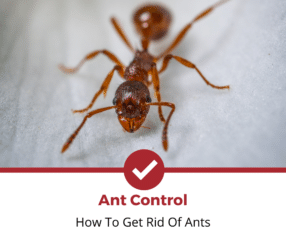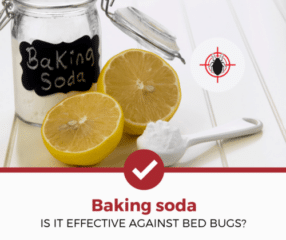Termites and other wood-destroying pests cost US homeownersover $1 billion per year. This is because they infest wood structures as their primary food source. And they destroy homes and businesses in the process. That’s why regular termite inspections are so necessary.
A scheduled termite inspection ensures there are no wood-destroying insect infestations on a residential property or business. And they are usually required to obtain mortgage financing. Additionally, they serve as a proactive measure against large termite infestations.
This guide will help you determine what a termite inspection is and how it can help you as a homeowner. Next, we’ll provide insight into the costs and procedures for getting started. Then you’ll be armed with enough information to hire an inspector and understand the basics of their findings.

Ed has been working in the pest control industry for years helping 1,000's of homeowners navigate the world of insect and rodent management. He manages Pest Strategies now helping homeowners around the world!

Table of Contents
What Is the Termite Inspection Process?
First, you’ll need to book an appointment. It usually takes between three to seven days to get a termite inspector to your home or business. In the meantime, it’s best to get fully prepared. To do that, follow these steps:
- Check credentials.Be sure the company the termite inspector represents is licensed, bonded, and insured in your state. Hiring a company with the proper credentials will ensure your property is well protected.
- Create access to the home.Be sure to remove storage items from under all sinks. The inspector will need access to these areas. Also, pull boxes, equipment, and other materials away from the walls in the garage and outside the home.
- Unclutter the attic.Make sure nothing is blocking the entrance to the attic. Also, make it as easy to maneuver as much as possible. An inspector will check more areas the greater the access they have.
- Trim bushes and branches.Any vegetation that is growing against the house has to be trimmed back. This will give the inspector better access to the exterior wall of the home.
- Create access to the crawlspace.Be sure to have the entrance to the crawlspace open by the time the inspector arrives. Also, make sure there is nothing to impede the inspector’s progress.
Depending on the square footage of your home, the inspection will take from one to two hours. It will typically start at the crawlspace and work up. This is because most termite species aresubterranean, which means they live underground. Therefore, a trained inspector can quickly determine if there is an infestation, usually at the ground level.
Next, the inspection will move to the first floor. The inspector looks for signs of infestation along baseboards, drywall, and door frames. They give special attention to pipe entry points where termites search for water sources.
After that, the inspector moves to the upper levels. They look for wood-boring insects that don’t depend on moist soil for survival. These are calleddrywood termites.
The best inspectors will climb on the roof. They’ll keep an eye out for termite damage within the soffits and fascias. They’ll also look for rotted wood thatdampwood termiteslove to infest.
Finally, the inspection will end with the outer wall. The inspector will look for obvious signs of termites around the entire perimeter. They may even go to wood piles and fallen trees throughout the lot. Any signs of termites on the property will be a confirmation of structural infestation.
After the inspector completes the inspection, you will receive a detailed inspection report. They will briefly go over it with you. And in many cases, you’ll be speaking with the company’s star salesperson. And that’s perfectly fine.
Be sure to thank the inspector for their time, and let them know you’ll be getting at least two more quotes. Yes, you’ll have to pay for the inspection. However, the company doing the inspection will discount this fee from their termite control service in most instances.
However, there’s no need to succumb to high-pressure sales tactics. Instead, be sure to obtain at least three quotes. It’s not the inspection that companies are after. It’s the chance to win the termite job that’s important to them.
How Much Does a Termite Inspection Cost?
The cost to have your home inspected for termites varies widely from state to state. Here, we show the national average and cost range. Also, you get an idea of the minimum and maximum you can expect to pay for a termite inspection.
- National Average Cost – $112
- Cost Range – $75–$150
- Minimum Cost – $75
- Maximum Cost – $200
Here are some other helpful tips concerning termite inspection costs:
- Termite inspections should be done at least every two years
- Orkin and Terminix offer free termite inspections
- Termite inspections tied to home sales typically run between $100 and $200
- The seller typically pays for a termite inspection during the close
- Some companies include the inspection when you purchase theirtermite treatment services
记住,检验成本不同the US. Home loan requirements also vary. So, it’s best to check with your real estate agent to determine what your obligations will be at the close.
Termite clearance letter
A termite clearance letter is an official report issued by a licensed termite control provider. The letter certifies that no infestation level is found in the home. And it’s usually required by most mortgage lenders before a borrower can secure a loan to purchase your house. It typically costs about 20% more to obtain a clearance letter than a regular termite report.
What Do Inspectors Look For?
Termites are adept at hiding. That’s why they can infest a home for years and avoid detection. So, it’s essential to hire a licensed professional to confirm the presence of termites. Here are some of the signs of termite activity they look for during an inspection.
Mud tubes
Subterranean termites constructmud tubesto stay in constant contact with the moist soil so they can survive. In addition, they use these structures to travel and communicate with the rest of the colony. There are four primary types of mud tubes:
- Working tubesare constructed from moist soil and travel from the ground to the wood structure.
- Exploratorytubes start from the groundbut don’t reach the wood.
- Droptubes start from the structure but don’t reach the ground.
- Swarm tubesallow the king and queen an exit point to fly and reproduce.
Signs of damage
Damaged wood and other signs of termite destructing often tell the inspector there’s an infestation. The extent of the damage gives clues as to how significant the problem is. And the location of the problem may indicate what type of termite is involved.
Droppings
Some termite species use their fecal matter to build tunnels. Others push it out of small holes near their nests. In either case, droppings are everywhere and are a determiner of termite infestation. Look for light brown or black grains that appear as sawdust.
Live termites
When peeling back the layers of wood, you may find live termites. You may also discover some behind drywall, within galleries, and traveling along a mud tube. These and other signs indicate a possible infestation.
Swarmers
Termites typically reproduce during the spring. Thousands of wingedreproductives飞和群体选择对交配。在the mating process begins, the newly formed couple sheds their wings. Finding these shed wings is a sign that there might be a termite colony close by.
Warped doors and window sills
Due to the moisture content of termite colonies, the inspector should look for warped areas of the home. These include ill-fitting doors and windows. In addition, other areas prone to warping, such as wood flooring and walls, should also be considered.
Galleries
Drywood and dampwood termite species burrow through the wood to build massive, disorganizedgalleriesabove the ground. Unlike subterranean termites, they do not need constant contact with the soil to survive. That’s why the inspector must look at every inch of a home, even the roof.
Advanced detection methods
Some inspectors use sound recognition utilizing acoustic equipment to detect termite infestations. These sensitive instruments pick up high-frequency sound waves to determine where termites are located within a structure. The noises these responsive devices pick up are usually the termites’ chewing sounds as they eat.
Many companies employ thermal imaging cameras to detect the thermal patterns termites give off within a colony. By detecting heat signatures, they can get an idea of where the greatest activity is within a structure. They can also determine the infestation level so they can direct the technician in the proper treatment methods.

Termites are adept at hiding.
That’s why they can infest a home for years and avoid detection. So, it’s essential to hire a licensed professional to confirm the presence of termites.
Find A Local Exterminator
Most Common Places to Inspect
Although it is not advised to perform your own official termite inspection, you can do a preliminary walk-through before hiring an inspector. Below are the areas to check. Also, we’ve included some tips on what any good inspector would look for within each inspection zone.
First, it’s essential to grab a few items you’ll need to complete the assessment. Here are the most important ones:
- Coverallsto protect your clothing. You’re going to get a bit grubby during the process.
- Powerful flashlight.The brighter, the better.
- Flat-head screwdriverto pry away loose wooden material.
Now that you have everything you need, it’s time to begin the inspection. First, you’ll start low and then work high.
Basement/Crawlspace
Begin with the inner wall of the foundation. Look for mud tubes running from the ground to the wood frame. Also, pay attention to support posts, sub-floors, and joists. Check for obvious damage in these areas.
Look carefully at the floor or ground. Is any cardboard present? If so, inspect it for apparent termite damage. Do the same for any loose blocks of wood that are in direct contact with the soil. Termites will source food where it’s the most accessible and abundant.
Pipes and sewer lines
Termites often build mud tubes along vertical pipes leading to wooden structures. Even though they may only be exploratory tubes, they still can indicate an established colony.
While you’re there, check for leaks. The tiniest drops of water can attract termites or other pests.
Be sure to inspect the pipes going to your hose bibs. Most houses have at least two. After several years, these areas could develop leaks.
Under sinks
Now, it’s time to move into the house. Start with the areas under the sinks. That’s because termites need moisture to survive.
Pay special attention to leaky plumbing. Look for mud tubes coming from pipe entry points. Also, check for damage long the cabinet bottom and sidewalls.
Baseboards
寻找沿着木护壁板翘曲,籼稻ting possible termite damage. You may have to pull one off to inspect the backside. If there are live termites present, you know you have a problem. Still, the presence of old mud tubes may be enough to prompt the hiring of an inspector.
If your home doesn’t have baseboards, check for warping along the bottom edge of the wall, where it meets the floor. Any deterioration could mean termite damage.
Floors
Warped wood flooring could also be an indication of a termite problem. However, you probably would have caught it while you were in the crawlspace. Sill, it’s best to leave nothing for granted when it comes to termite inspections.
Interior Walls
Walls inside a home are probably the trickiest places to inspect. One of the reasons for this is that walls are such a large area to cover. The other is the fact that termites are excellent at hiding. So, follow these steps when inspecting interior walls:
- Start at the bottom and run your hand horizontally across the entire wall area. You are feeling for soft spots.
- If you come across an area that feels soft or papery, stop and follow the next step.
- Start at the bottom. Use your thumb or index finger and run it vertically up the wall. If the drywall caves in, check for signs of mud. It means that the termites are eating the drywall paper. You may even detect live activity.
Windows and doors
Check to see that all exterior doors and windows close properly. Then, look at the interior doors. If you find any that don’t close correctly, check for warping along with the door jams and window sills. These could be signs of termites due to their high humidity content.
Outside walls and foundation
If you live in a gulf state or throughout one of the coastal areas, you have the added task of checking for dampwood termites. Be especially vigilant for any leaky plumbing. Also, check eaves, overhangs, and roof sections for rotted wood. Dampwood termites love to infest these water-soaked areas.
Decks, porches, and patios
These attached structures can be a conduit for termites to infest the rest of the house. So, it’s important to check underneath decks and porches. Look for mud tubes and damaged wood. Also, pay special attention to untreated areas where wood rot may be present.
Woodpiles
If you have a stash of firewood next to your house, be sure to check it regularly for termites. However, just because your woodpile is infested doesn’t necessarily mean your house is, also. Still, it’s best to keep woodpiles at least 50 ft away from your home, just in case.
5 Reasons Why You Should Call a Termite Inspector
There are several reasons to call a termite inspector. However, we’ve included the top 5 here. Keep in mind that not all exterminators or pest control companies offer termite inspections.
原因1:你卖your home
Mortgage companies require the borrower to obtain a certified termite inspection for the home they are purchasing, which in this case, is yours. This requirement protects the bank’s assets. It also keeps the new homeowner from having to pay the costs of removing termites later on.
Reason 2: You’ve seen evidence of termites
If you’ve recently seen signs of termite infestation around your home, it’s time to call an inspector. You may have only noticed it in the backyard or on an old tree stump. Even so, it’s best to call anyway, just to be sure.
Reason 3: You’ve had termites in the past
If you’ve gone to the trouble and expense of removing termites from your home, it makes sense to keep them from coming back. Regular inspections will help ensure this by alerting the technician to possible problems. By catchingsmall activityearly, you can save a lot of money through spot treating instead of having to pay for complete barrier or fumigation treatments.
Reason 4: Your neighborhood is susceptible
There are areas of the country where termites are more prevalent than others. That goes for individual neighborhoods as well. If half the neighbors on your block have had to undergo termite treatments in the past few years, it’s time to hire a termite inspector.
Reason 5: Peace of mind
Even if you only suspect you have termites, it could be something that causes undue stress on you and your family. It’s well worth the cost of a termite inspection to put yourself at ease. After all, your peace of mind is worth a lot more than money.
Get Your Free Quote In Seconds
Because pest control products can be dangerous to your family if mishandled, we always recommend consulting with an exterminator even if just to ask for advice on how to apply pest control products yourself.
Our pest experts review each company for quality, cost, customer service, safety, and 100’s of other important factors and assess a rating out of 100. Below are our top 3 picks based on that review for pest removal. We’ve set up a direct line with each company so you can get fast free quotes right now.









